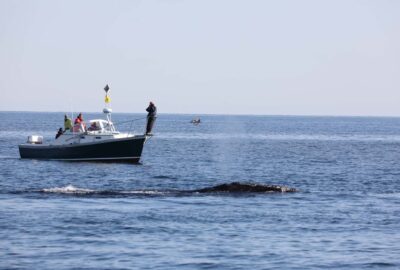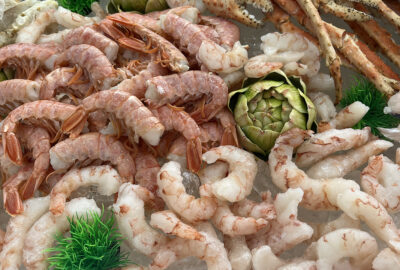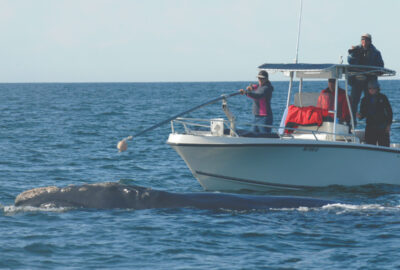Investigating Movement Patterns and Temperature Preferences of Thorny Skate in the Gulf of Maine
This is Part II of a series of blogs about research on thorny skates in the Gulf of Maine.
By Jeff Kneebone, PhD on Thursday, April 05, 2018

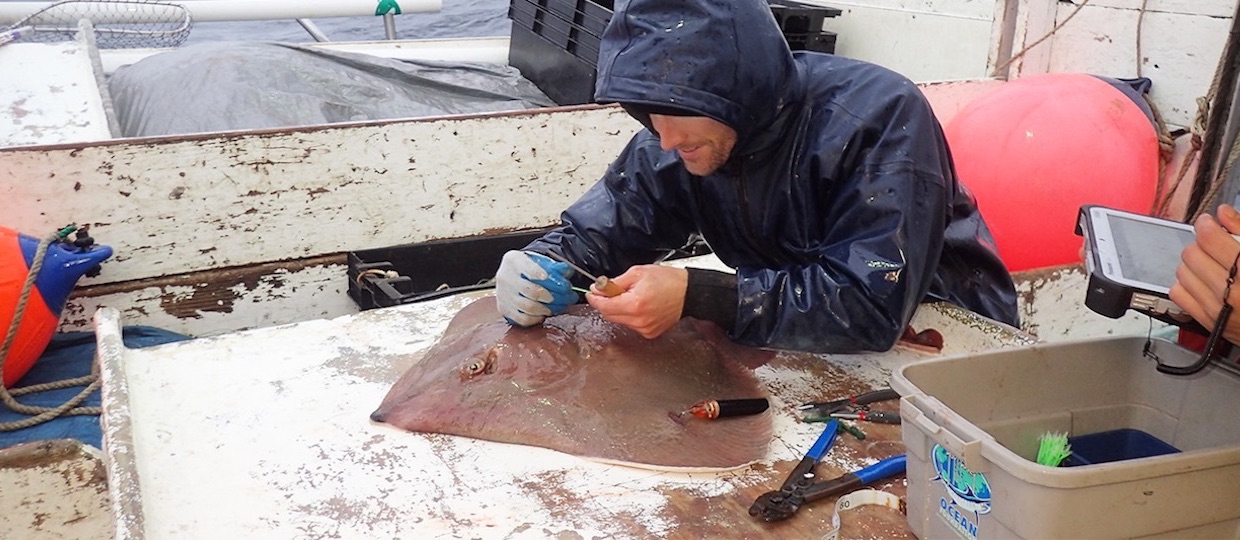
Part I: Mitigating the Impact of Commercial Fishing on Thorny Skate in the Gulf of Maine
The thorny skate (Amblyraja radiata) is a bottom-dwelling elasmobranch found continuously throughout the North Atlantic Ocean from Cape Cod to the Barents Sea.
Typically considered a rather sedentary species, there is some genetic evidence that the thorny skate population is actually segmented into sub-populations over its vast geographic range. But a general lack of information on thorny skate movement patterns prevents a complete understanding of their population dynamics in the North Atlantic. To complicate matters, thorny skate are both targeted and taken as bycatch in many North Atlantic commercial fisheries, and their numbers are severely depleted in several regions, including the Gulf of Maine.
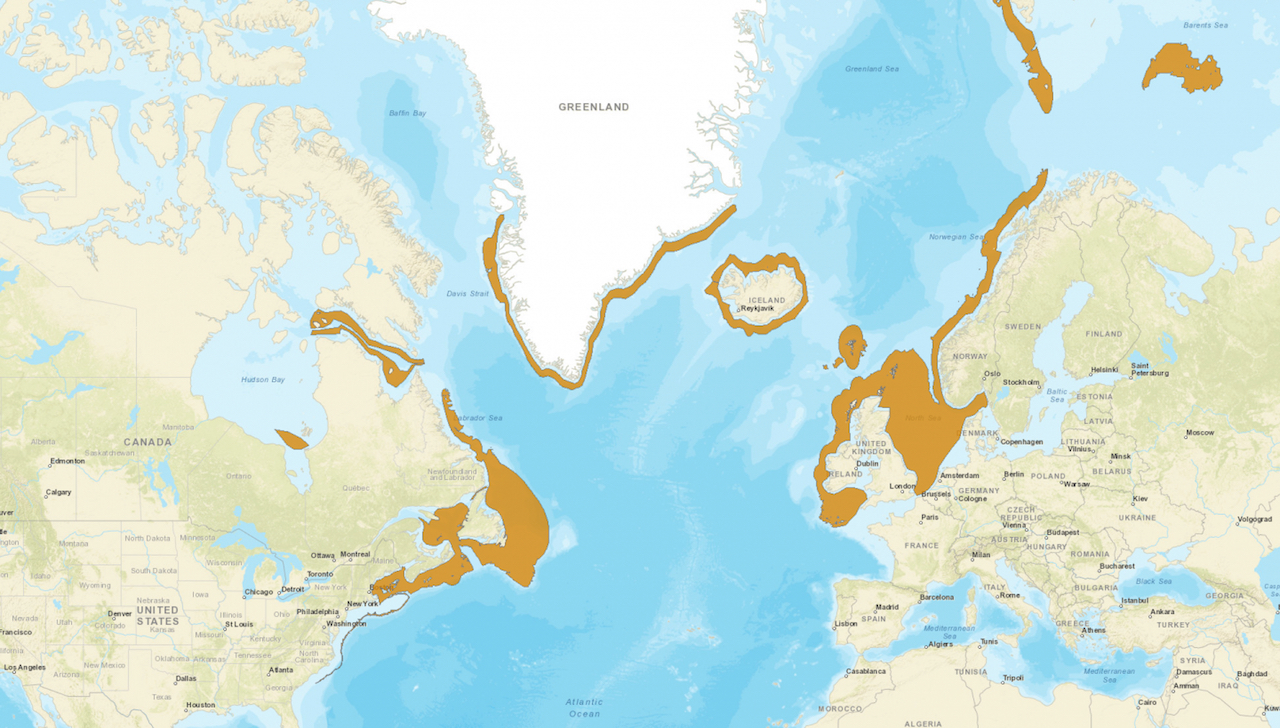
In the Gulf of Maine region, thorny skate biomass levels remain near historic lows despite regulations that have banned their retention in commercial fisheries since 2003.
It’s currently unknown whether the lack of population recovery is due to ongoing fishing mortality, environmental factors, or a combination of both. Fisheries-related factors could include bycatch mortality in U.S. waters or directed catches outside U.S. waters. On the environmental side, it’s possible that warming ocean temperatures in the region are affecting the stock through reduced productivity or distributional shifts in the population.
Regardless of the cause, it is critical that scientists understand the spatial scale at which these factors may be affecting thorny skate populations. However, virtually nothing is understood about thorny skate movement patterns and population structure in the Gulf of Maine.
To address this data gap, NOAA’s Saltonstall-Kennedy Grant Program awarded funding to researchers from the Anderson Cabot Center for Ocean Life Fisheries Science and Emerging Technologies (FSET) program to conduct a cooperative study aimed at documenting the movement patterns and temperature preferences of thorny skate in the Gulf of Maine.

Working in cooperation with local commercial fishermen, the NOAA/Northeast Fisheries Science Center Cooperative Gulf of Maine Bottom Longline Survey, and the Massachusetts Division of Marine Fisheries Atlantic Cod Industry Based Survey, more than 1,000 thorny skates have been tagged in the Gulf of Maine over the past three years, including nearly 200 individuals that have received pop-up satellite archival (PSAT) tags.
In addition to obtaining critical information on thorny skate movements within the Gulf of Maine region over short-term (days) and long-term periods (months to years) from tag records, temperate data collected from the PSAT tags will provide novel insights into the year-round temperature preferences of these skates and permit a better evaluation of the extent to which this species is at risk from climate change.
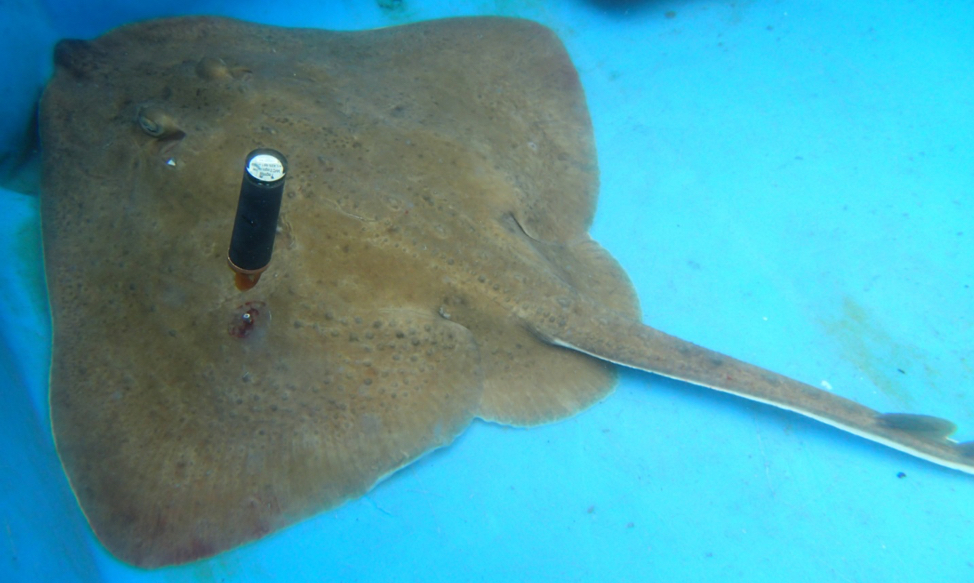
Collectively, data generated by this study will both enhance our scientific understanding of this vulnerable species, and assist with the development of management and conservation actions to facilitate population recovery.
Scientific and Industry Collaborators: Dr. Jeff Kneebone, Dr. John Mandelman (Anderson Cabot Center for Ocean Life); Dr. Tobey Curtis (NOAA Fisheries); Dr. James Sulikowski (University of New England); Captain Joe Jurek (F/V Mystique Lady); Captain Phil Lynch (F/V Mary Elizabeth); Captain Eric Hess (F/V Tenacious II); Dr. Dave McElroy, Brian Gervelis (NOAA Cooperative Research Branch); Bill Hoffman, Nick Buchan (MA Division of Marine Fisheries).

